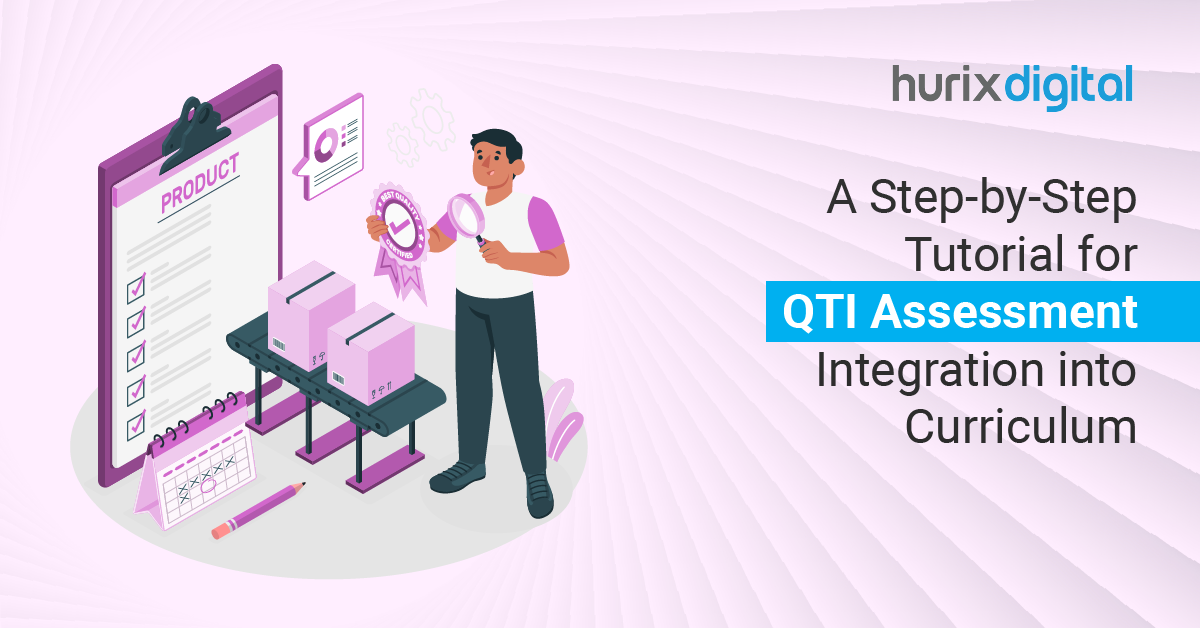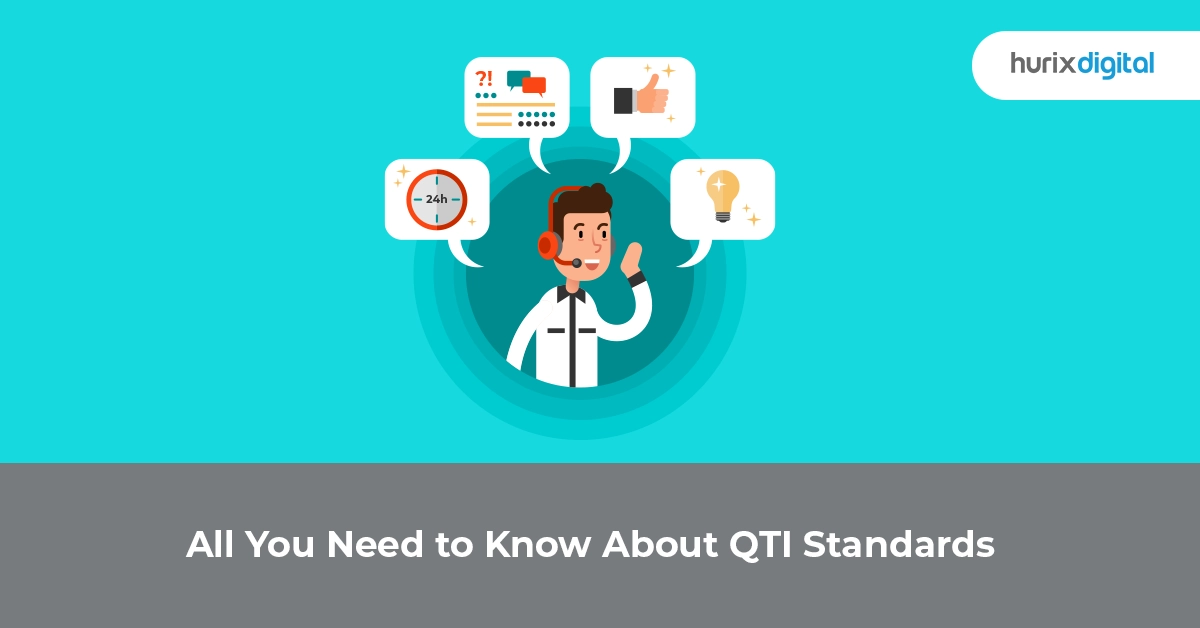
A Step-by-Step Tutorial for QTI Assessment Integration into Curriculum
Question and Test Interoperability (QTI) is the most widely used and commonly adopted standard for marking assessments, tests, quizzes, and exams. Simply put, QTI is a zip file that contains assessment or quiz data in the form of XML and its associated multimedia content.
There are three major versions of QTI available: QTI 1. x, 2. x, and the recently released QTI 3. Most modern LMS today support both QTI 1.2 and 2.1, with some old ones only supporting QTI 1.2. Some educational publishers also offer to export their assessment question bank in QTI format.
This post aims to explore more about QTI standards, their purpose, and the stepwise procedure of integrating QTI assessments into your curriculum.
Table of Contents:
- What is Question and Test Interoperability?
- Purpose of QTI Standards
- How to Successfully Integrate QTI Assessment into Your Curriculum- Stepwise Procedure
- The Bottomline
What is Question and Test Interoperability?
Question and Test Interoperability (QTI) is an XML-based standard for the easy exchange or interoperability of assessment content.
Developed by the IMS Global Learning Consortium, QTI allows for the convenient and faster sharing of tests, questions, and results data between different learning management systems (LMS) and assessment tools.
Integrating QTI assessments into educational platforms helps ensure that your test or assessment content is interoperable, scalable, and reusable. This is especially relevant for educational institutions and organizations who wish to streamline their test or assessment processes and enhance the overall flexibility of their digital learning environments.
A few of the other noteworthy features included in the latest QTI 3.0 standards are:
- Higher interoperability and increased consistency of rendering test/assessment/quiz content.
- Easy access to shared vocabulary for standard display
- Increased accessibility support as per best practices
- Higher support for main HTML5 elements and other web-friendly markups
Also Read: Top 8 Factors to Consider While Choosing the eLearning Authoring Tool
Purpose of QTI Standards
QTI standards are designed primarily to facilitate easy interoperability between various systems. Put simply, QTI is there to:
- Offers a structured and well-documented content format to help educators and educational publishers store and exchange items independent of the authoring tool that is used to create them.
- Provides a proper content format for easily storing and exchanging tests independent of the test construction tool that is used to create them.
- Supports the seamless deployment of item banks across multiple learning and assessment delivery systems.
- Offer systems with the quick ability to report test results consistently.
- Support the easy deployment of items, item banks, and tests from diverse sources in one single learning or assessment delivery system.
How to Successfully Integrate QTI Assessment into Your Curriculum – Stepwise Procedure
In today’s rapidly evolving world of educational technology, the integration of powerful assessment tools plays a key role in enhancing the learning experience.
QTI standard is one such robust tool that enables the seamless exchange of assessment and test content between different systems.
If you are looking to integrate QTI assessments into the curriculum, here is a step-by-step procedure to do the same:
Step 1: Assess Existing Infrastructure and Plan Accordingly
In this step, you need to do the following:
- Understand and evaluate the existing systems, such as the current LMS and other assessment tools in use.
- Clearly outline the objectives and identify the specific goals and outcomes of the QTI integration.
- Allocate all the necessary resources, such as budget and technical expertise.
Step 2: Select the Right Tools and Technologies
Choose the following tools:
- Compatible Systems: Make sure that the LMS and other assessment tools you are using support QTI LMS standards.
- Modern and Latest Technologies: Use the latest technologies or JavaScript frameworks such as TypeScript and React for efficient development.
Step 3: Develop the QTI Integration
The development phase involves coding and implementing the QTI integration. For that, you have to:
- Develop QTI-compliant content such as tests, quizzes, and assessments content that adhere to QTI standards.
- Implement various XML-based data exchange mechanisms between systems.
- Test thoroughly and validate to ensure that the QTI integration into the curriculum works as desired and meets the objectives set at the start.
Step 4: Provide Proper User Training
It is also important to offer adequate training and consistent support to users for the successful integration of QTI assessment into the curriculum. To do so, here are the steps:
- Give ongoing training sessions to both educators and administrators to help them understand and utilize the new system effectively.
- Offer proper technical support to help address any concerns or issues that occur during and after the process of QTI assessment integration into the curriculum is completed.
Step 5: Monitor Regularly and Keep Improving
The last step in the process of integrating QTI assessments into the curriculum is continuous monitoring and improvement, including:
- Conduct regular reviews to assess the overall performance of the QTI integration.
- Gather feedback from users to identify areas for improvement.
- Make necessary updates to keep the system efficient as well as updated.
Also Read: How to Create SCORM Courses for Enhanced Learner Engagement?
The Bottom line
The integration of QTI standards into the curriculum can be instrumental in enhancing the overall quality and flexibility of digital assessments.
By following a stepwise and structured approach as discussed above, you can ensure that the QTI assessment integration in the curriculum is successful and also meet the required needs of educators and students alike.
If you are an educational publisher looking for robust powerful assessment creation tools that fully comply with QTI standards, Dictera is a great choice to go with.
The automated, AI-based tool serves as an excellent QTI authoring tool that is presented by Hurix Digital and enables educators, publishers, and trainers to create high-quality tests, quizzes, surveys, and assessments.
Connect with us today to learn more about Dictera!

Currently, Serving as the Vice President of Technology and Principal architect at HurixDigital, a leader in edTech world. With 25 years of IT Services experience, I specialize in EdTech and various domains, focusing on digital transformations, integration, and AI/ML in education. My expertise drives innovative solutions and operational efficiency, leveraging cutting-edge technologies to meet industry needs.




